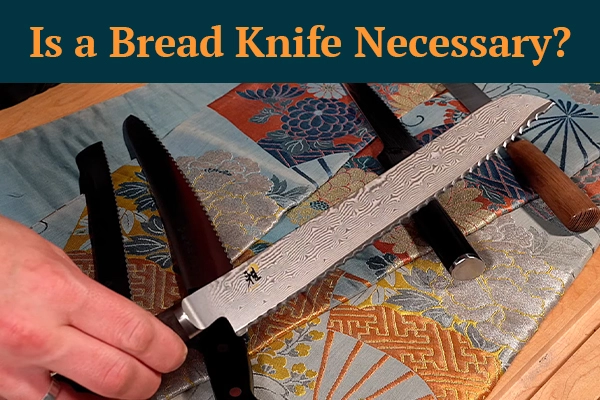Can a Bread Knife Cut Meat? [Know How You Can]
Can a bread knife cut meat? It is one of the most common questions on Google.
The short answer is yes, a bread knife can definitely cut meat, but it may not be the best tool for this job.
In this article, we’ll reveal why a bread knife may struggle with meat and recommend alternative best knives for cutting, slicing, and carving different types of meat. After reading this blog post, you will get the answers to the following questions:
Can you use a bread knife to cut meat?
How to use a bread knife to cut meat?
Is it safe to use a bread knife to cut meat?
We are indeed clearing the confusion, and this article is meant to answer the question(s) about whether using a bread knife to cut meat is safe.
What is a bread knife?
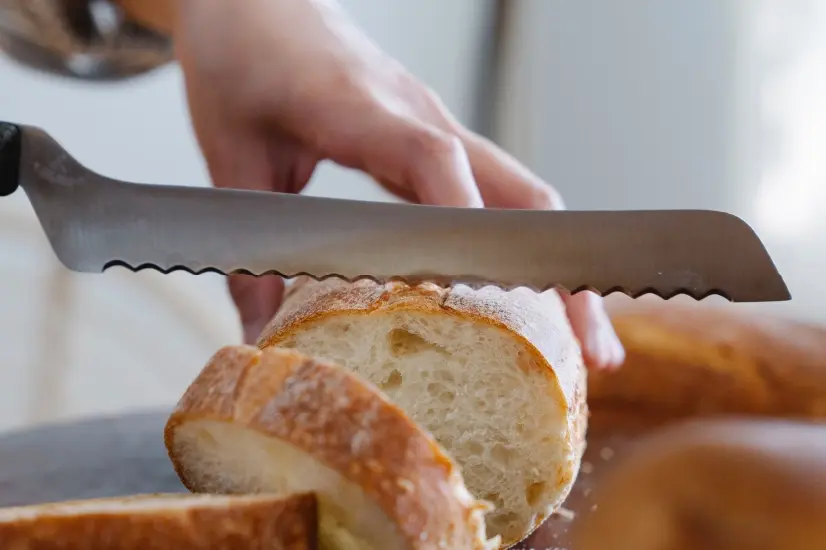
A bread knife is a kitchen knife specifically designed for cutting bread. It typically has a long, serrated blade that is designed to grip and saw through the crust of bread without squashing the softer interior.
Bread knives are usually between 8 and 14 inches in length, with a pointed tip that can be used to make precise cuts. The serrated edges of the blade can also be used to cut through other foods with a rugged exterior and a soft interior, such as cakes, tomatoes, or even meats.
Still, as we previously explained, it may not be as efficient or precise as a knife specifically designed for cutting meats, such as a carving knife or a chef’s knife.
Can a bread knife cut meat?
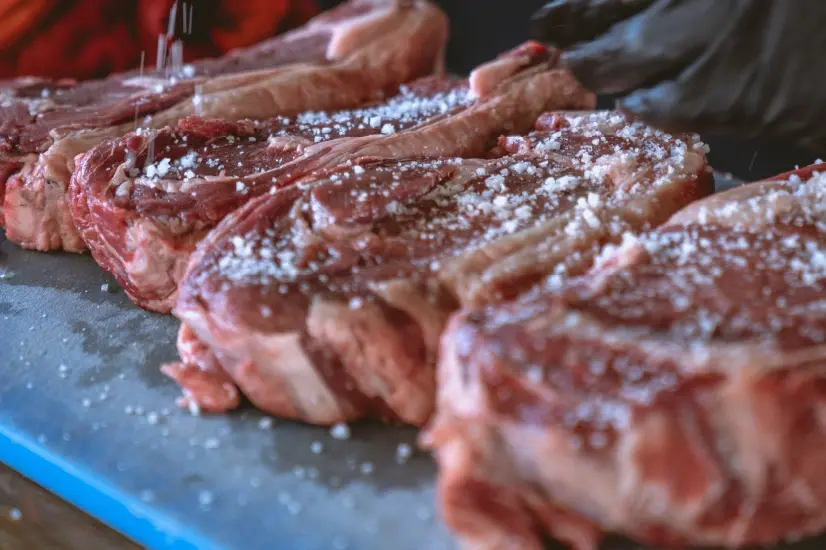
Yes, a bread knife can cut meat, but it may not be as efficient or precise as a knife specifically designed for cutting meat, such as a carving knife or a chef’s knife. The serrated edge of a bread knife can help grip and saw through meat, but it may not create as clean or smooth of a cut as a knife with a straight edge.
Reasons why a bread knife can cut meat
A bread knife has a serrated edge designed to grip and saw through bread. The serrations on the blade can help to grip and saw through the surface of the meat, allowing the knife to make a cut.
The serrations can also help to prevent the knife from slipping on the surface of the meat, which can be particularly useful when cutting through meat that is particularly slippery or fatty.
In addition to the serrated edge, bread knives are often long and flexible, which can be beneficial when cutting through significant cuts of meat.
The flexibility of the blade allows for better control of the knife and can help to make it easier to make precise cuts.
However, a bread knife may be less efficient and precise than a knife specifically designed for cutting meat, such as a carving knife or a chef’s knife. The serrated edge of a bread knife can create a sawing action that can cause the meat to be torn or shredded rather than cut cleanly.
A straight-edge knife is more efficient in slicing through a slice of meat; it cuts cleanly and allows for more precision. It can also be sharpened more quickly than a serrated blade.
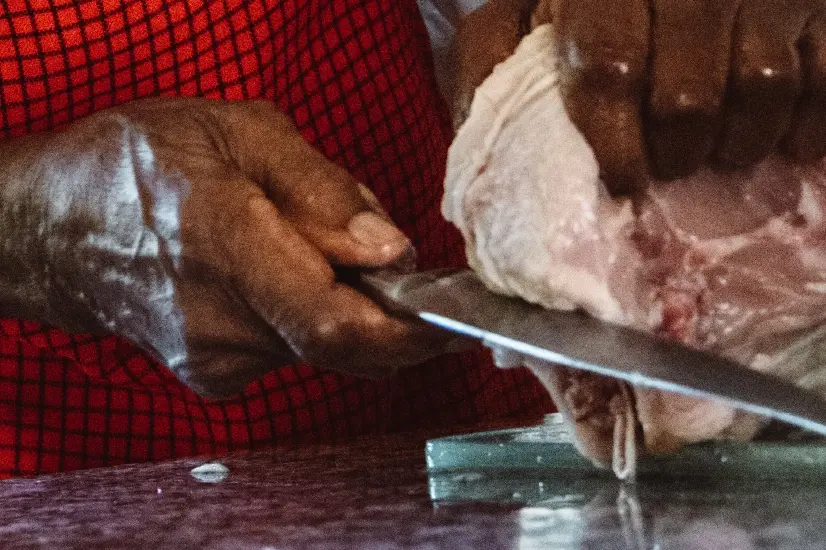
While a bread knife can be used to cut meat, there may be better options. A carving knife or chef’s knife is the more efficient and precise option for cutting meat.
Another vital factor to consider when using a bread knife to cut meat is the size of the serrations on the blade.
Bread knives are typically designed with larger serrations that are meant to grip and saw through bread. These larger serrations may be less effective when cutting through smaller or thinner cuts of meat or when trying to make precise cuts.
A knife with smaller serrations would be more efficient in cutting meat with small or precise cuts. Additionally, bread knives are often less durable than knives specifically designed for cutting meat.
The serrated edge of a bread knife can be more prone to chipping or breaking, especially if used frequently on harder meats.
In summary, while a bread knife can be used to cut meat, it may not be the most efficient or precise option. The serrated edge of a bread knife can grip and saw through meat, but it may not create as clean or smooth of a cut as a knife with a straight edge.
Bread knives are often less durable than knives specifically designed for cutting meat and may not be as effective when cutting through smaller or thinner cuts of meat or making precise cuts. For best results, a carving knife or chef’s knife would be more appropriate for cutting meat.
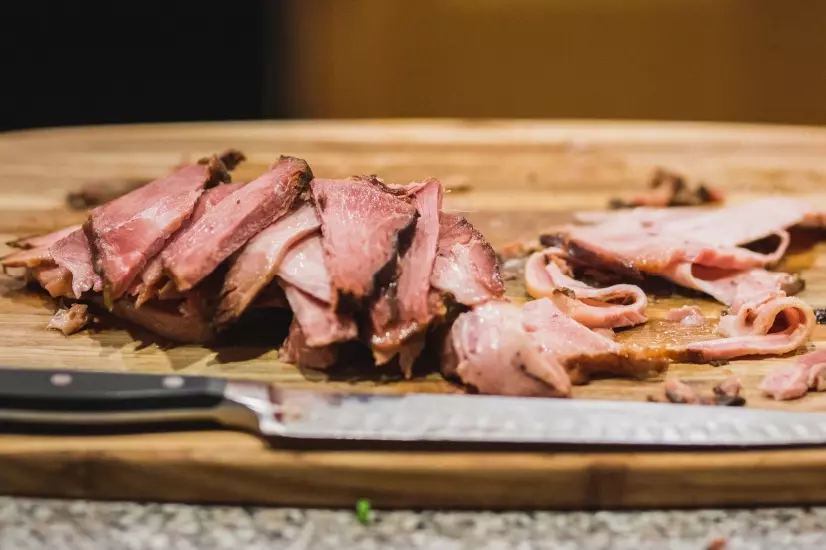
Another drawback of using a bread knife to cut meat is that the serrated edge can be more challenging to clean and maintain than a straight edge.
Meat particles and juices can get caught in the serrations and be harder to remove. This can lead to bacteria growth and cross-contamination if not cleaned properly.
Another thing to also consider is the shape of the blade. Bread knives usually have a curved blade shape and a pointed tip, which is unsuitable for cutting meat.
A straight-edged blade would be more suitable for cutting meat as it allows for cleaner cuts, whereas a curved blade can cause the tearing of the meat.
Furthermore, bread knives are designed to handle something other than the heavy-duty tasks that a meat knife is meant for. Due to the softer steel used in bread knives, their serrated edges may dull more quickly when cutting through meat, reducing the knife’s effectiveness over time.
In summary, a bread knife can be used to cut meat, but it is not ideal for the job. Bread knives are less efficient, precise, durable, easy to clean, or safe than those designed for cutting meat.
The serrated edge can create a sawing action that can cause the meat to be torn or shredded rather than cut cleanly. It’s best to use a carving knife or chef’s knife for meat-cutting tasks, as they are designed to handle heavy-duty tasks and provide a cleaner and safer cut.
What happens when you use a bread knife to cut meat?
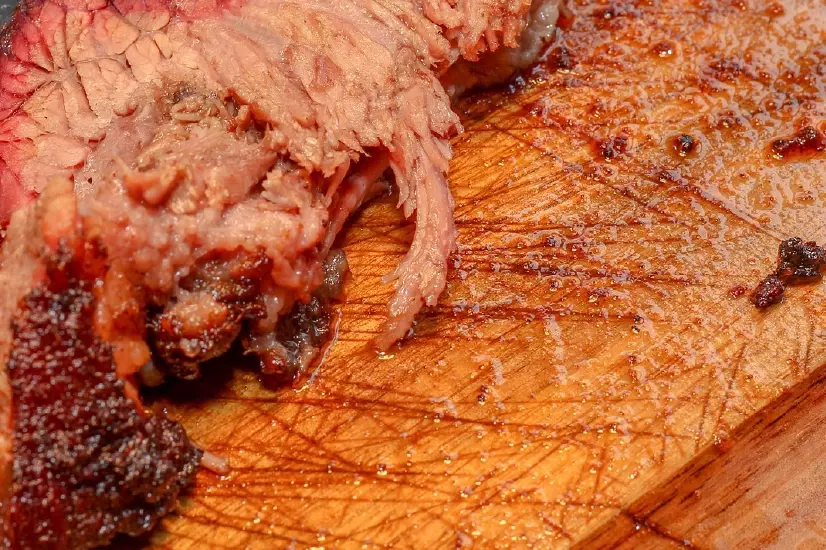
When using a bread knife to cut meat, the serrated edge of the blade can grip and saw through the surface of the meat, allowing the knife to make a cut.
However, because the serrations are designed to grip and saw through bread, the sawing action can cause the meat to be torn or shredded rather than cut cleanly.
The serrations can also make it more difficult to make precise cuts and may not be as effective when cutting through smaller or thinner cuts of meat.
Additionally, the serrated edge can be more difficult to clean and maintain, especially if meat particles and juices get caught in the serrations. If not cleaned properly, this could lead to bacteria growth and cross-contamination.
It’s important to note that a bread knife is not designed for heavy-duty tasks such as cutting meats. It may not be as efficient or precise as a knife specifically designed for cutting meat, such as a carving knife or a chef’s knife, which are more appropriate for cutting meat.
What knife should you use to cut meat?
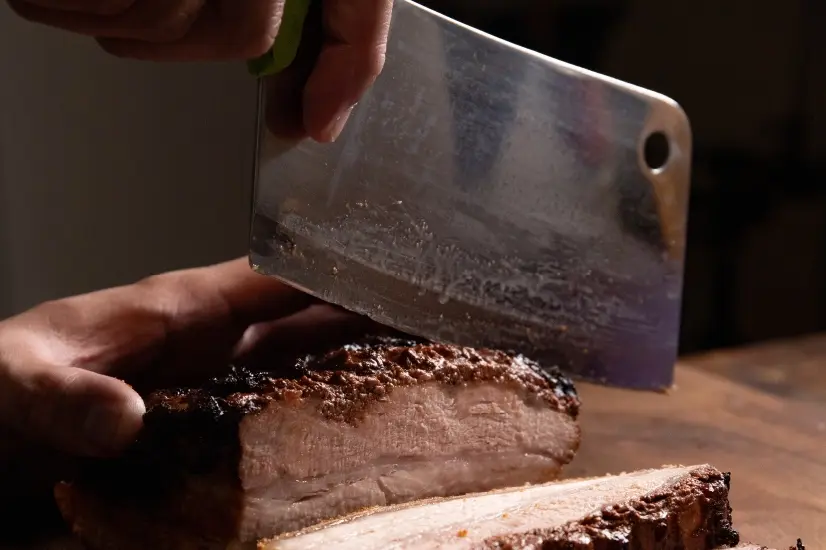
A chef knife, carving knife, or butcher knife is commonly used to cut meat. With its curved blade, a chef’s knife allows for rocking cuts and can be used for both slicing and chopping.
A carving knife, which is longer and thinner, is specifically designed for slicing cooked meats such as roast beef or turkey.
A butcher knife is generally a large, sharp knife typically used to cut and prepare meats. It typically has a thick, heavy blade and a sturdy handle. It is designed to handle significant cuts of meat.
All three knives should be sharp to ensure clean cuts and easy slicing.
In addition to a chef’s knife or a carving knife, a boning knife or a fillet knife can also be used to cut meat.
A boning knife is a sharp, thin blade with a pointed tip, and it is used to remove bones from meat. It is beneficial for poultry and fish.
A fillet knife is similar to a boning knife but is even more flexible and used for filleting fish. Also, it’s crucial to maintain the knife’s sharpness, as a sharp knife is not only safer to use but also makes the cutting process easier and more efficient, resulting in better-looking and more evenly cut pieces of meat.
Best knives to cut meat – Which knife is best for cutting meat?
Some of the best knives for cutting meat include:
Wusthof Classic 8-Inch Chef’s Knife: This German-made knife has a durable, sharp, high-carbon stainless steel blade that is perfect for slicing, dicing, and chopping meats of all types.
Global G-48 – 8-inch Chef’s Knife: This Japanese-made knife is lightweight and has a very sharp and thin blade, perfect for precise cutting and slicing meats.
Shun Classic 8-Inch Chef’s Knife: Another Japanese-made knife, this one has a VG-MAX steel blade that is incredibly sharp and durable, making it perfect for heavy-duty meat-cutting tasks.
J.A. Henckels International Classic 8-Inch Chef’s Knife: This knife is made in Spain; it’s well-balanced and has a full tang blade that is perfect for slicing and chopping meats of all types.
Dexter Russell Sani-Safe 8-Inch Chef’s Knife: This American-made knife is made with a high-carbon steel blade that is perfect for heavy-duty meat-cutting tasks. Its handle is NSF approved for food service use, and it is easy to clean.
Ultimately, the best knife for cutting meat will depend on your personal preferences and the specific types of meats you will be cutting. It’s always best to handle the knife and check the balance and weight before buying.



